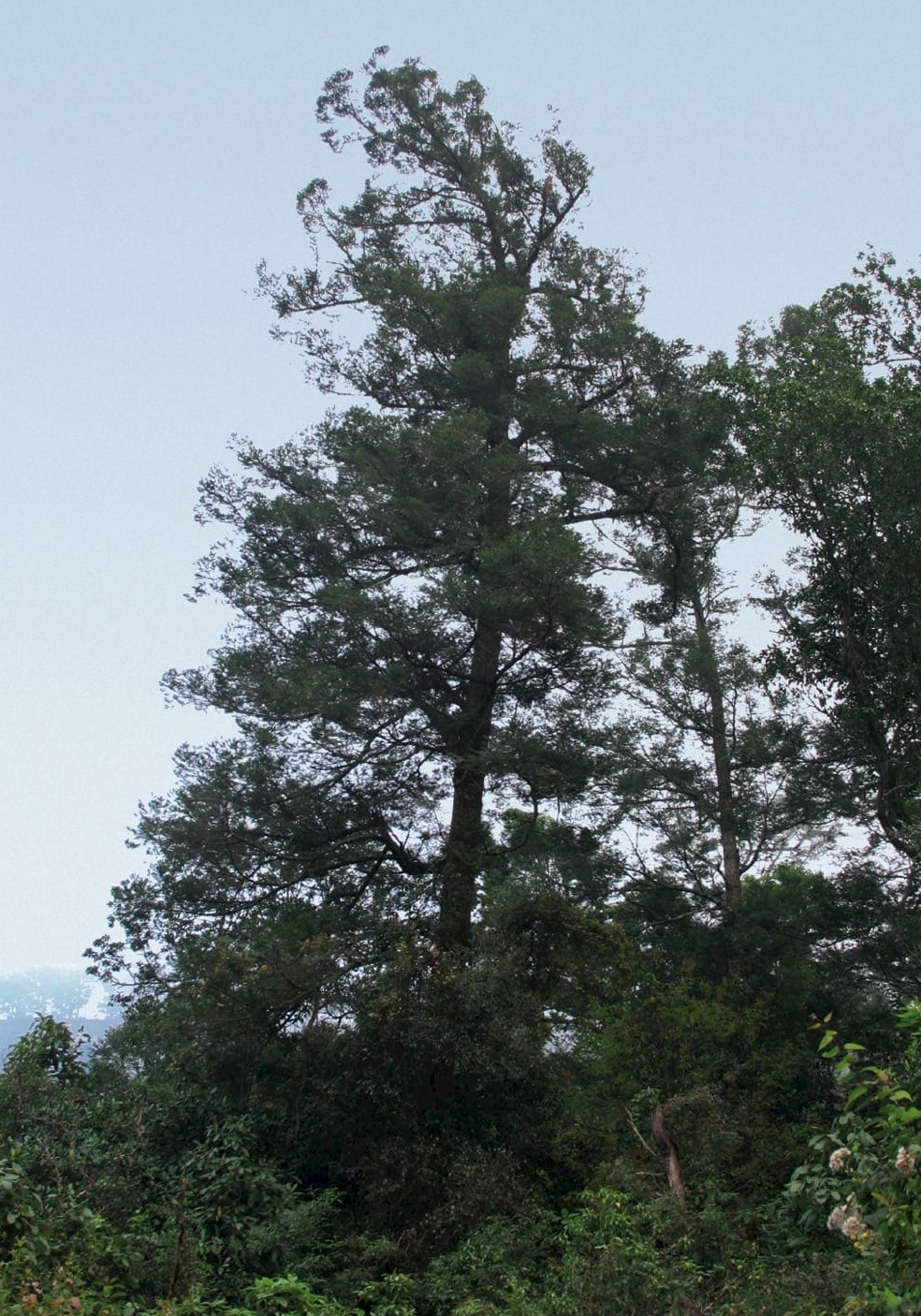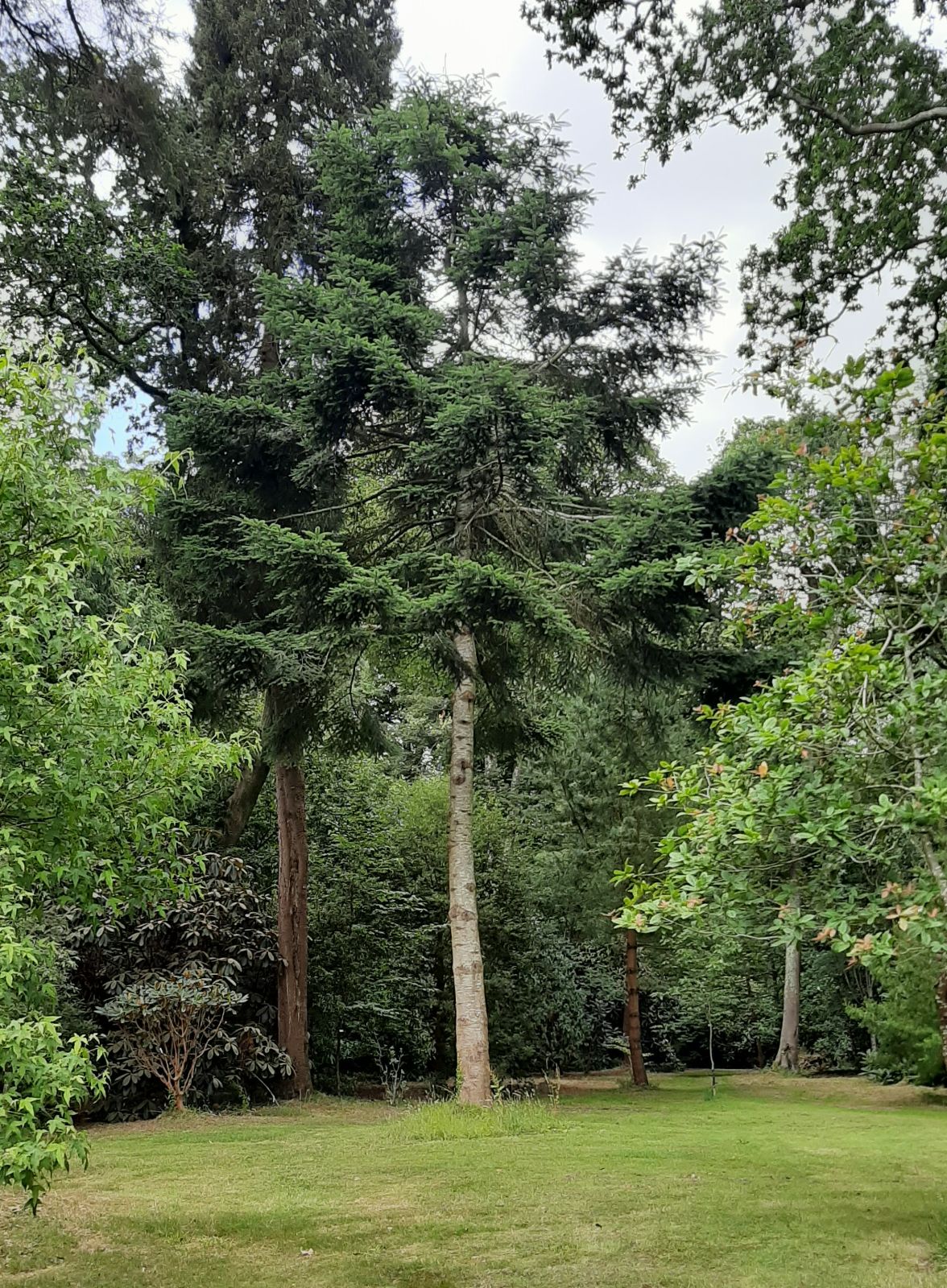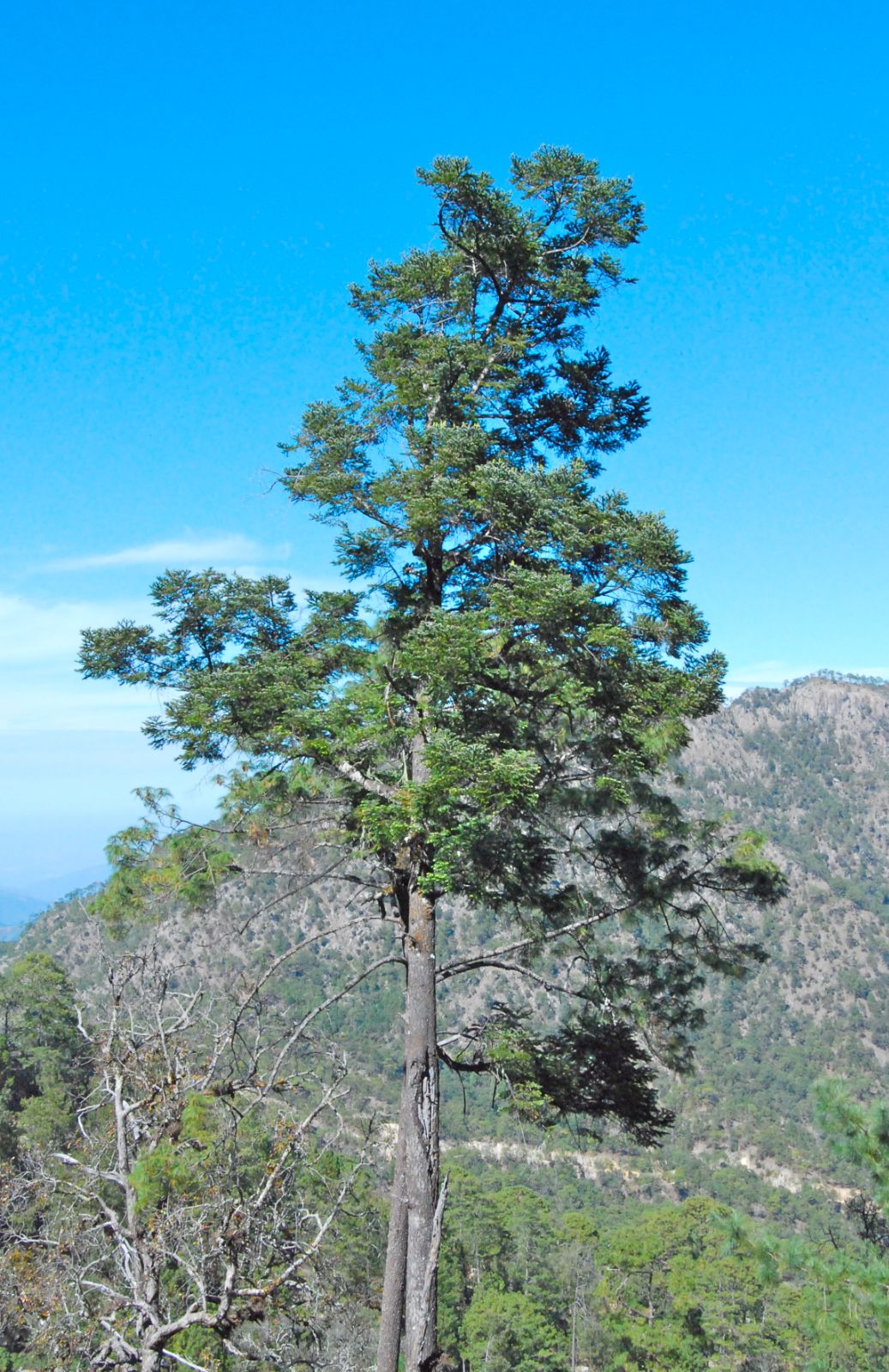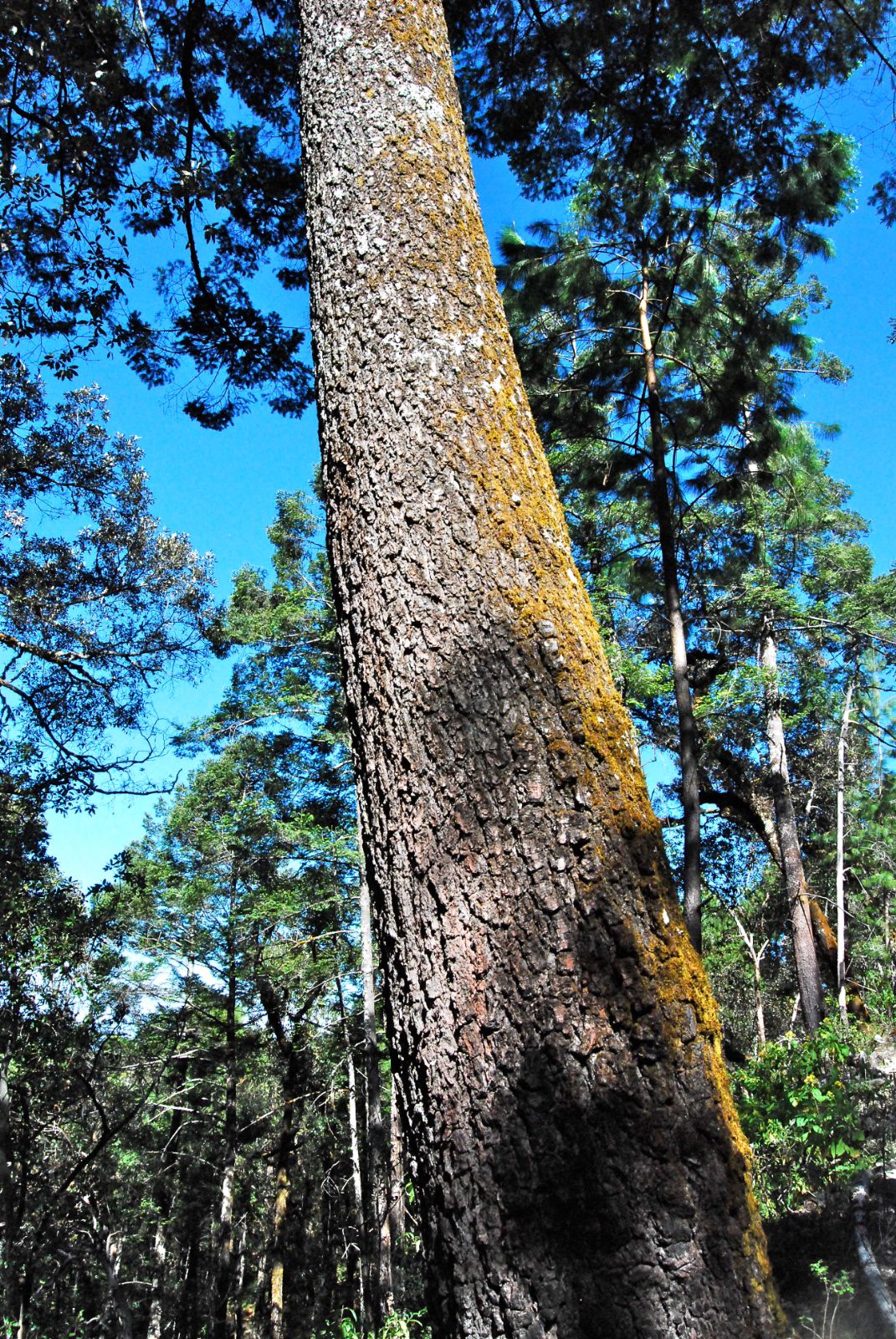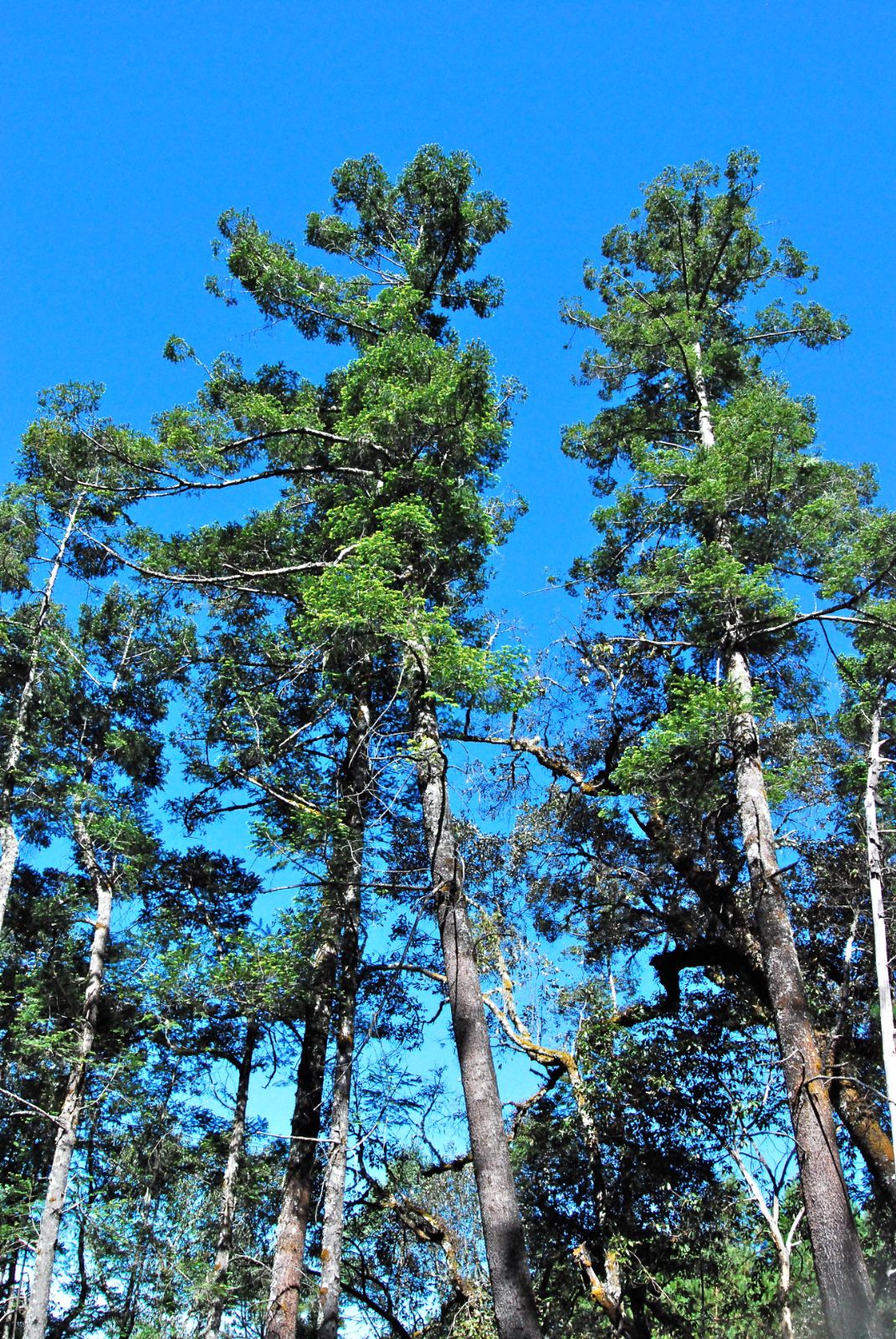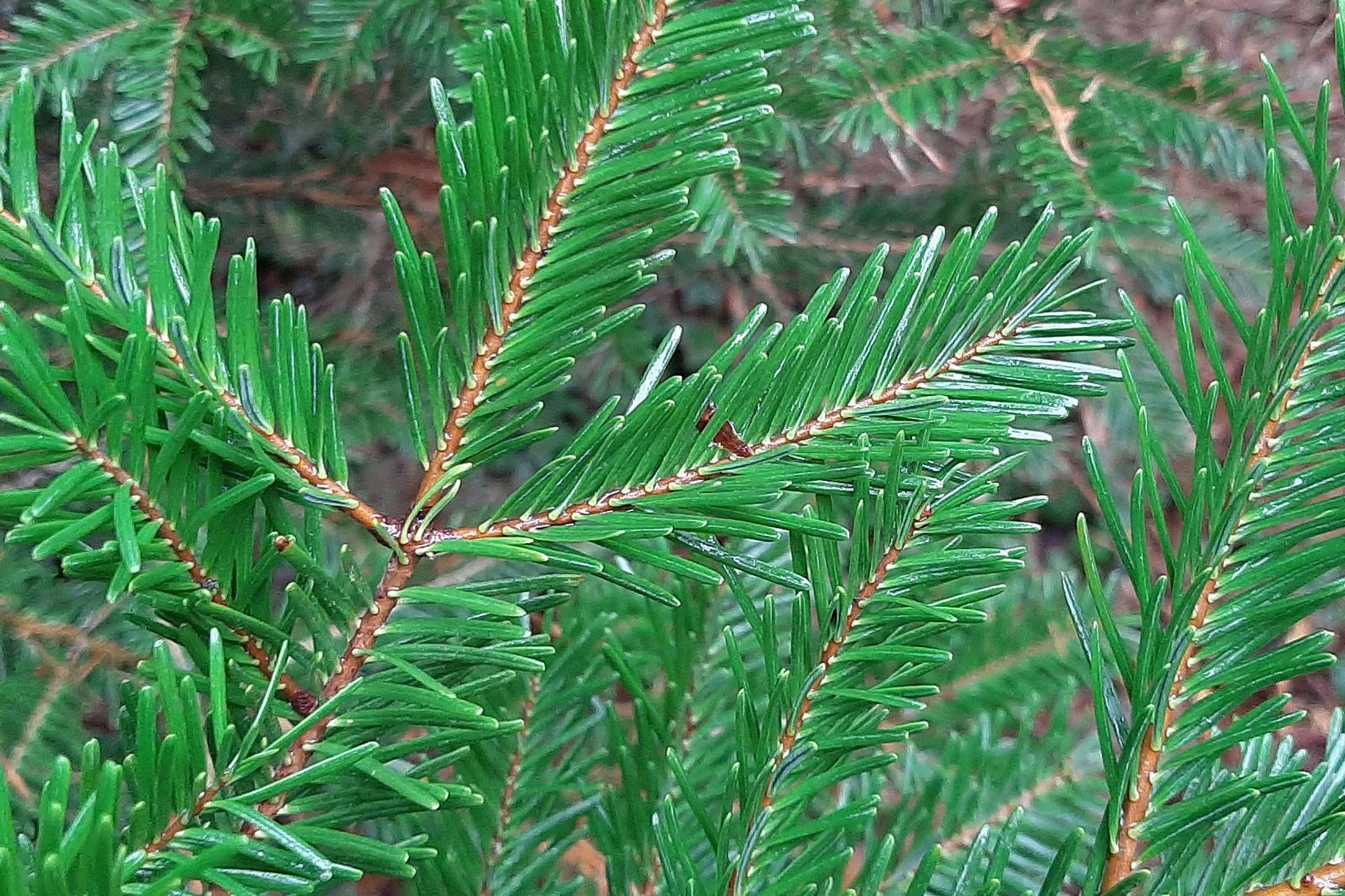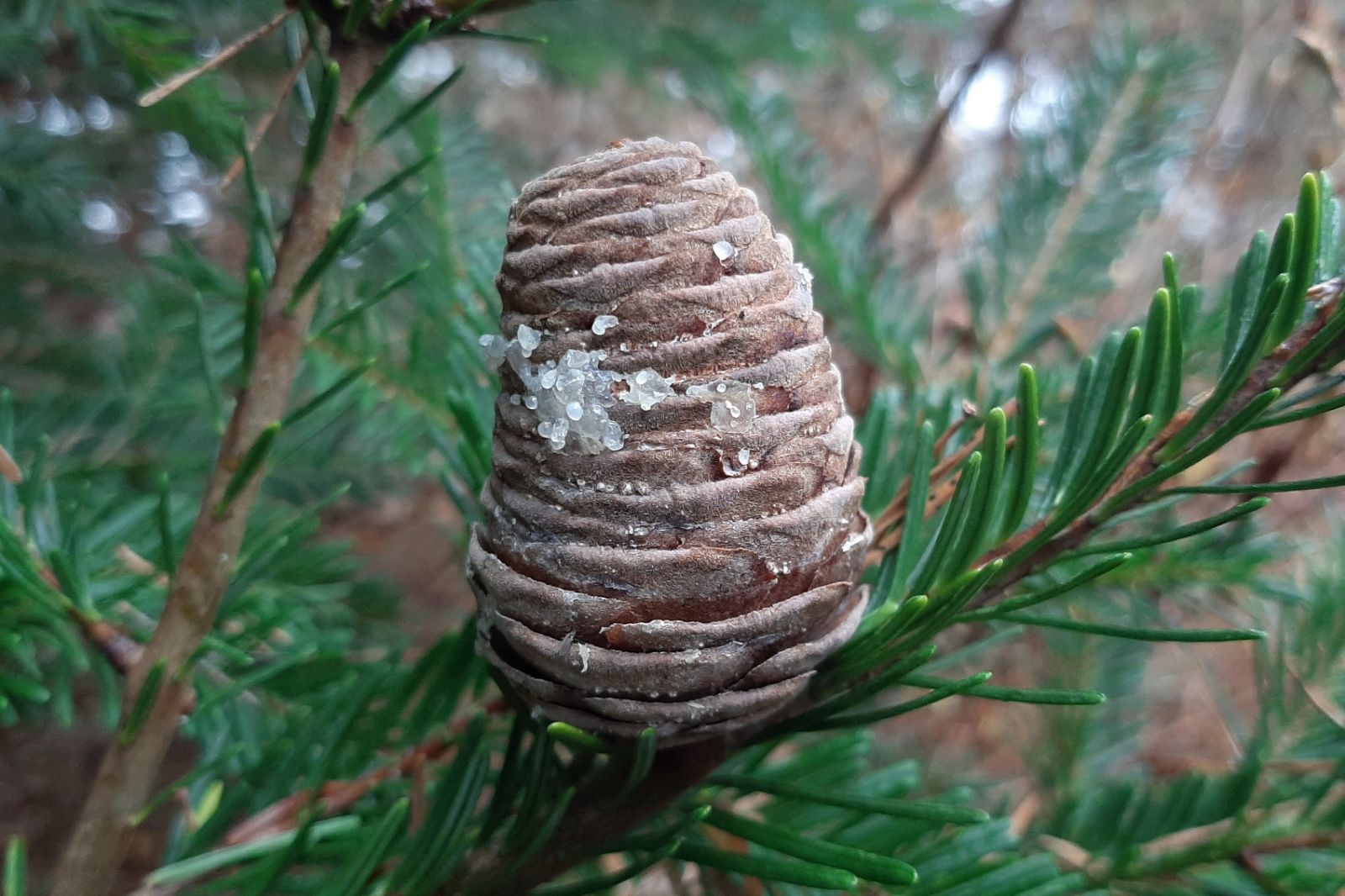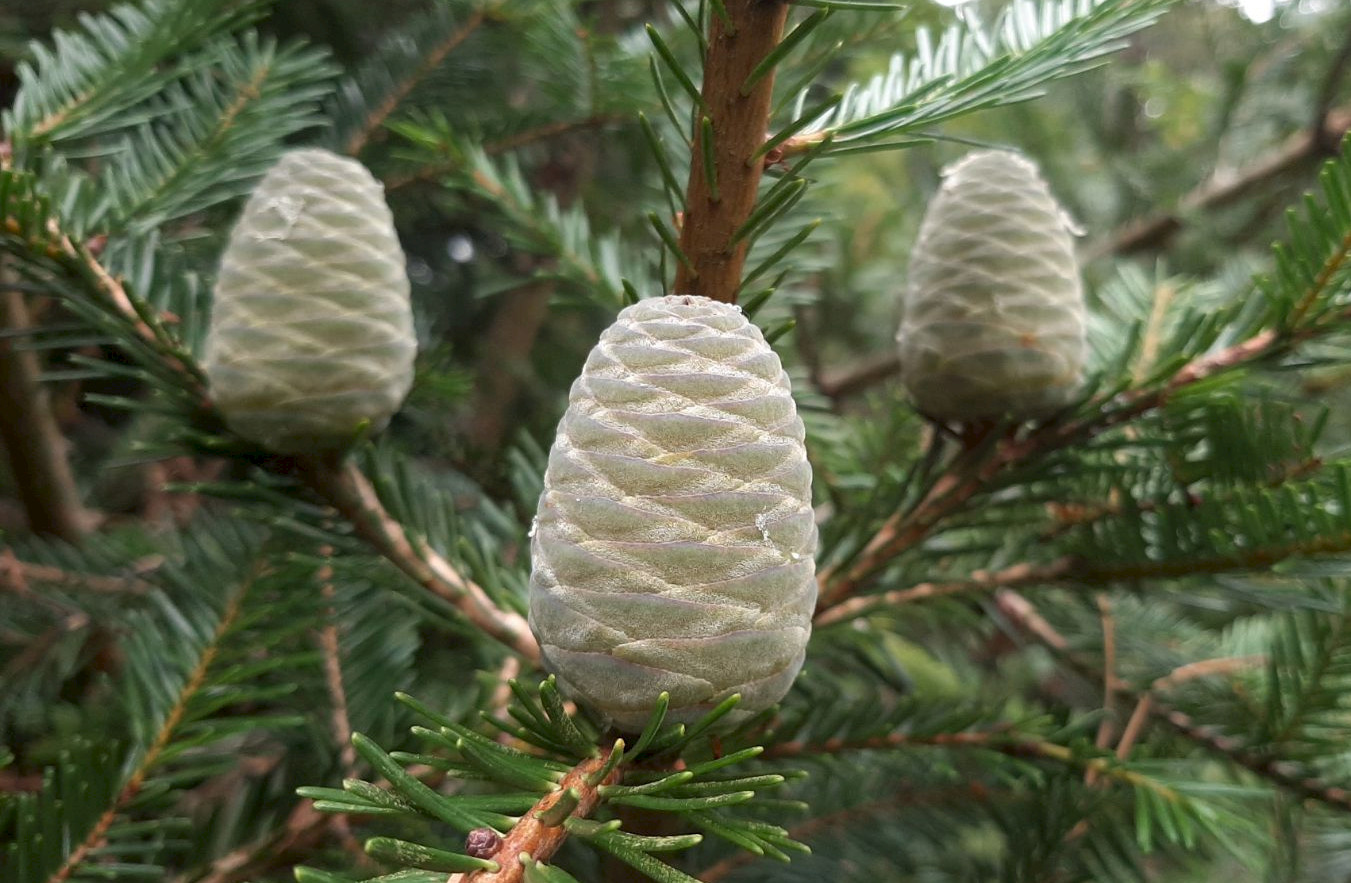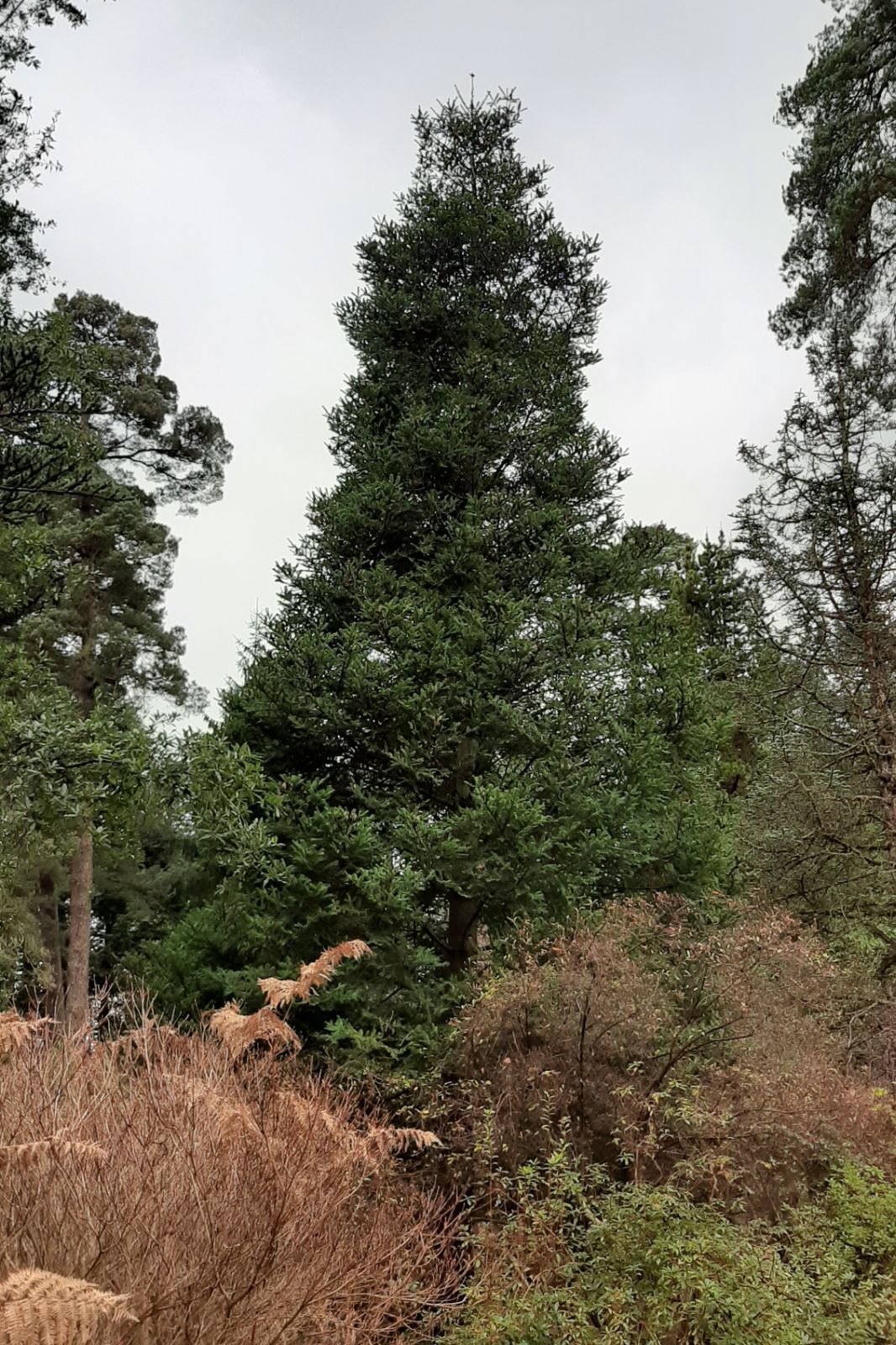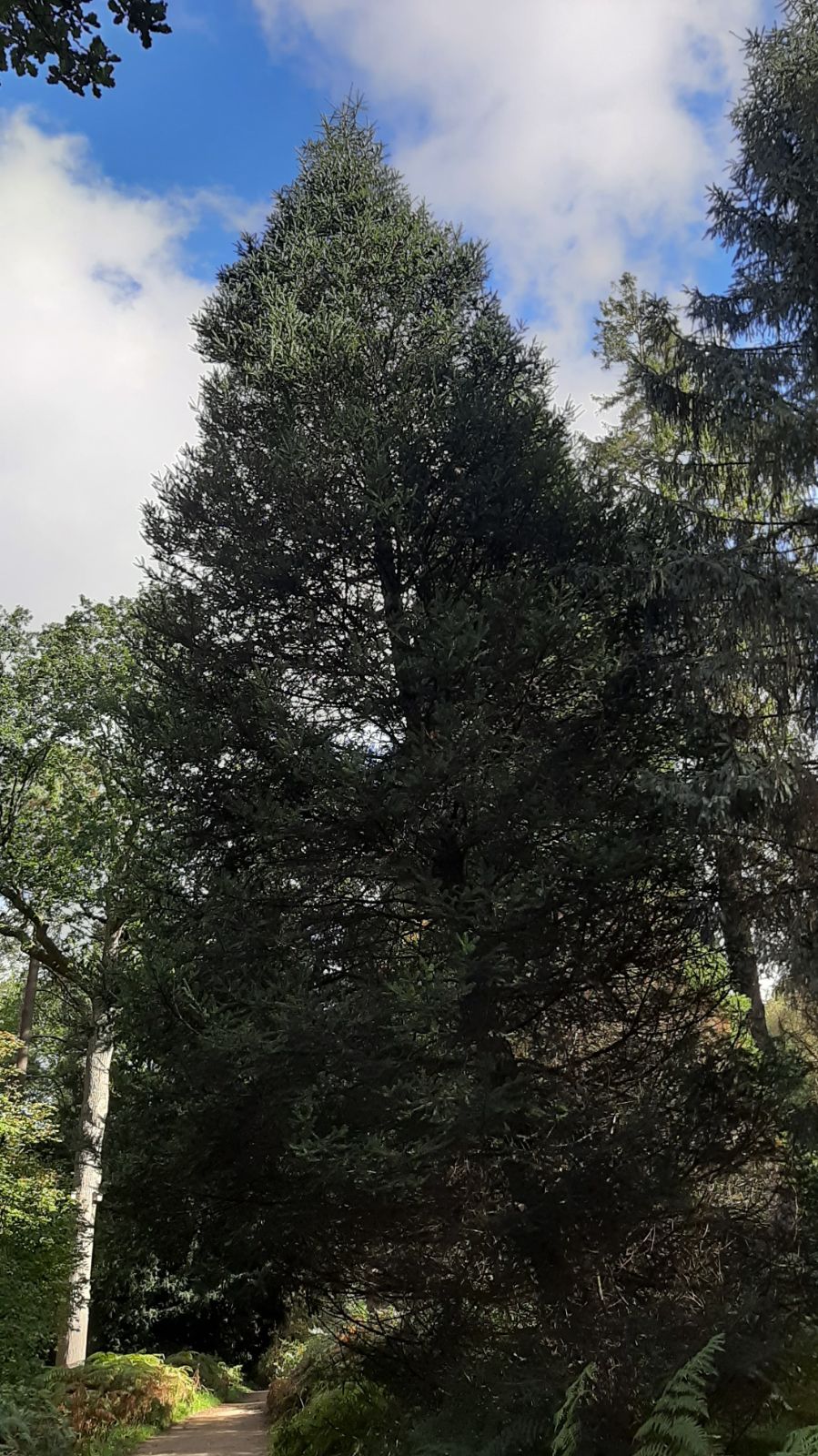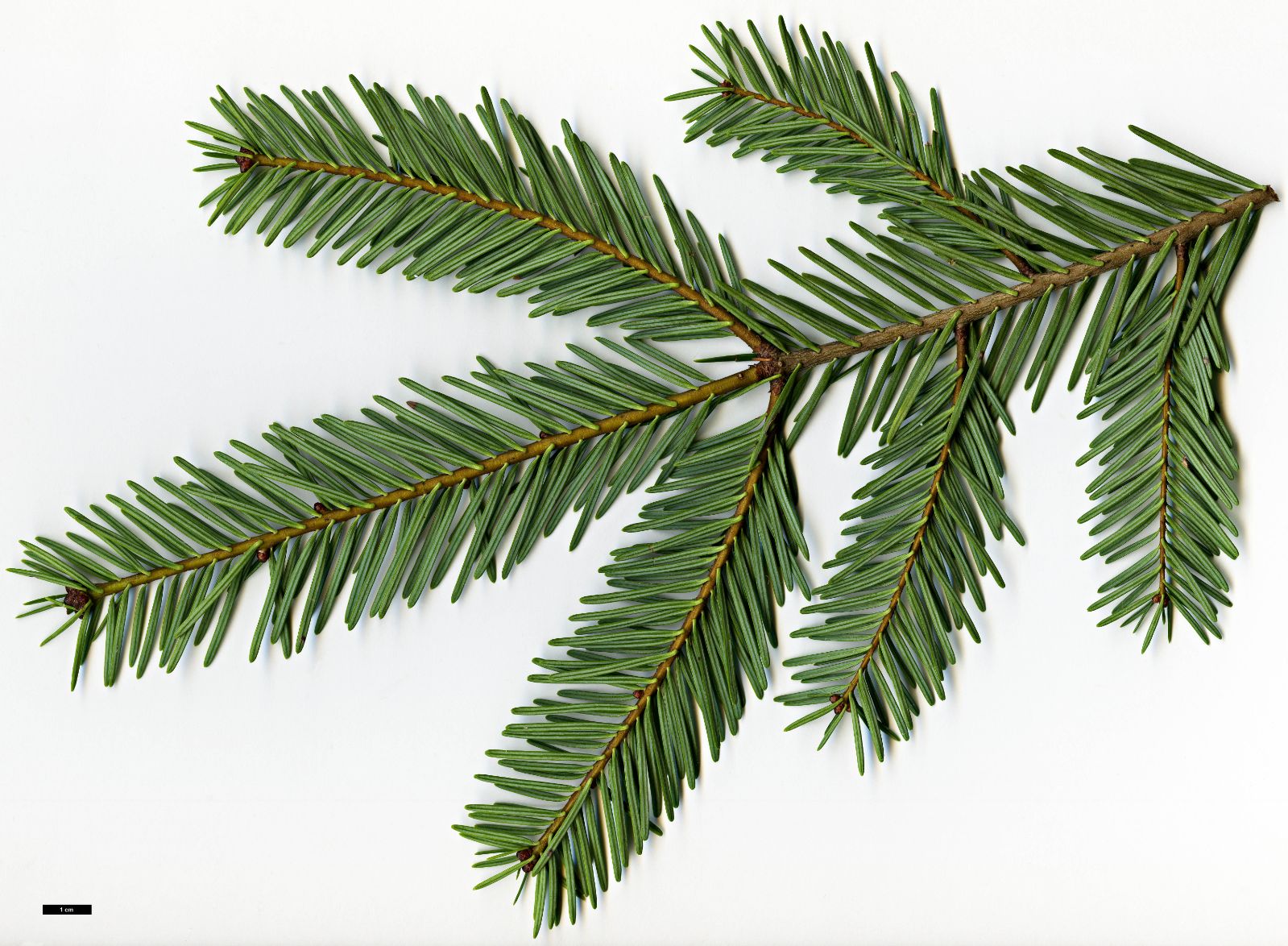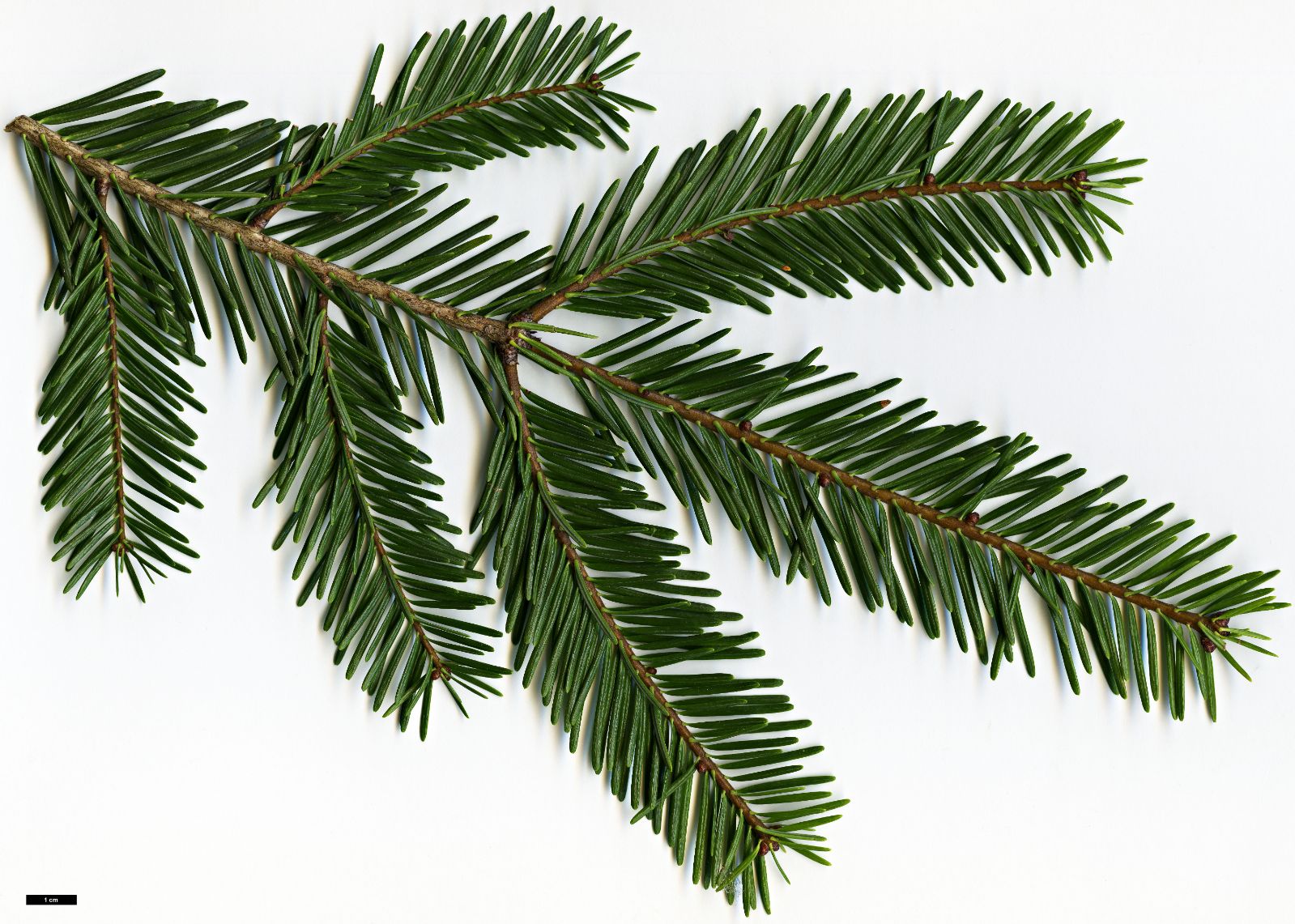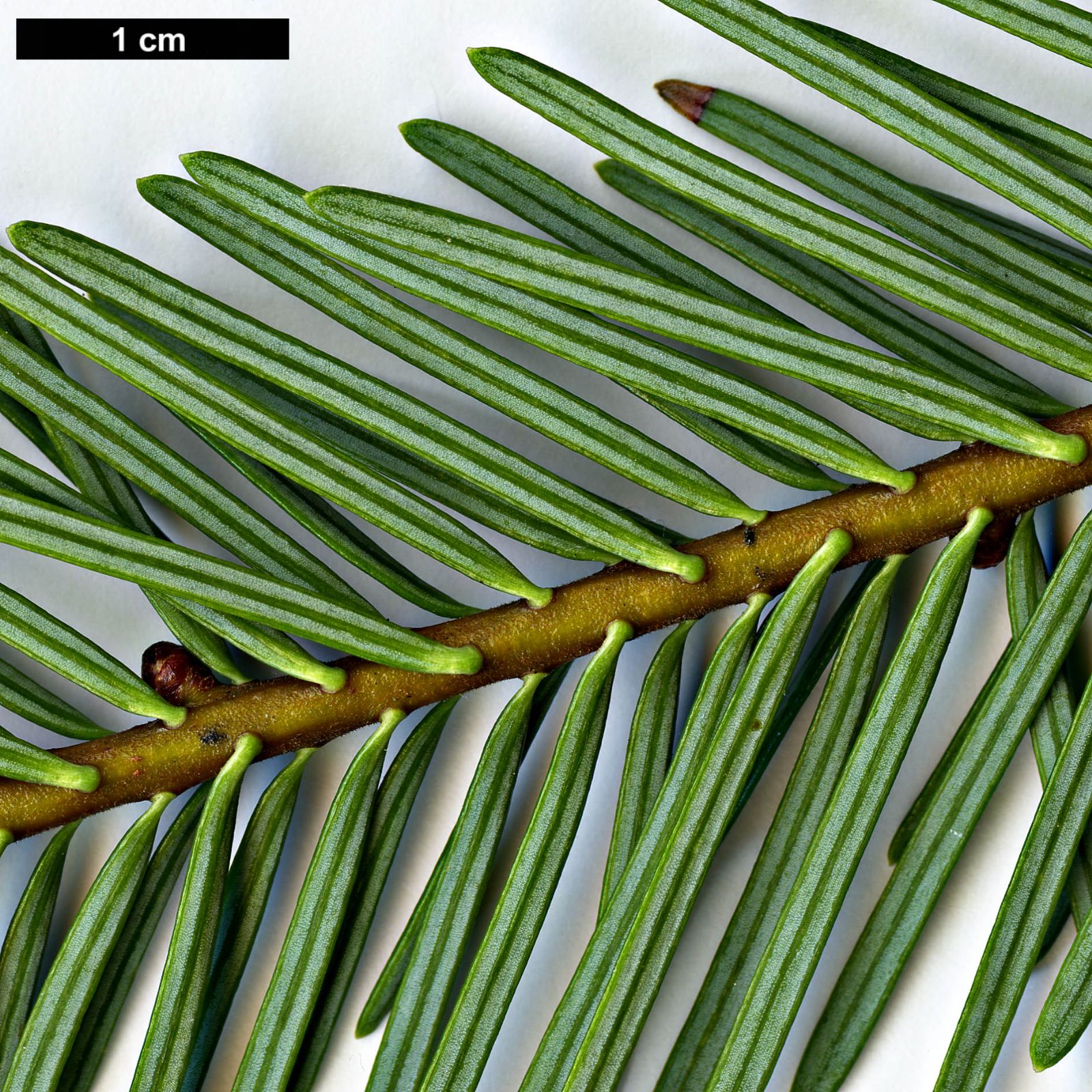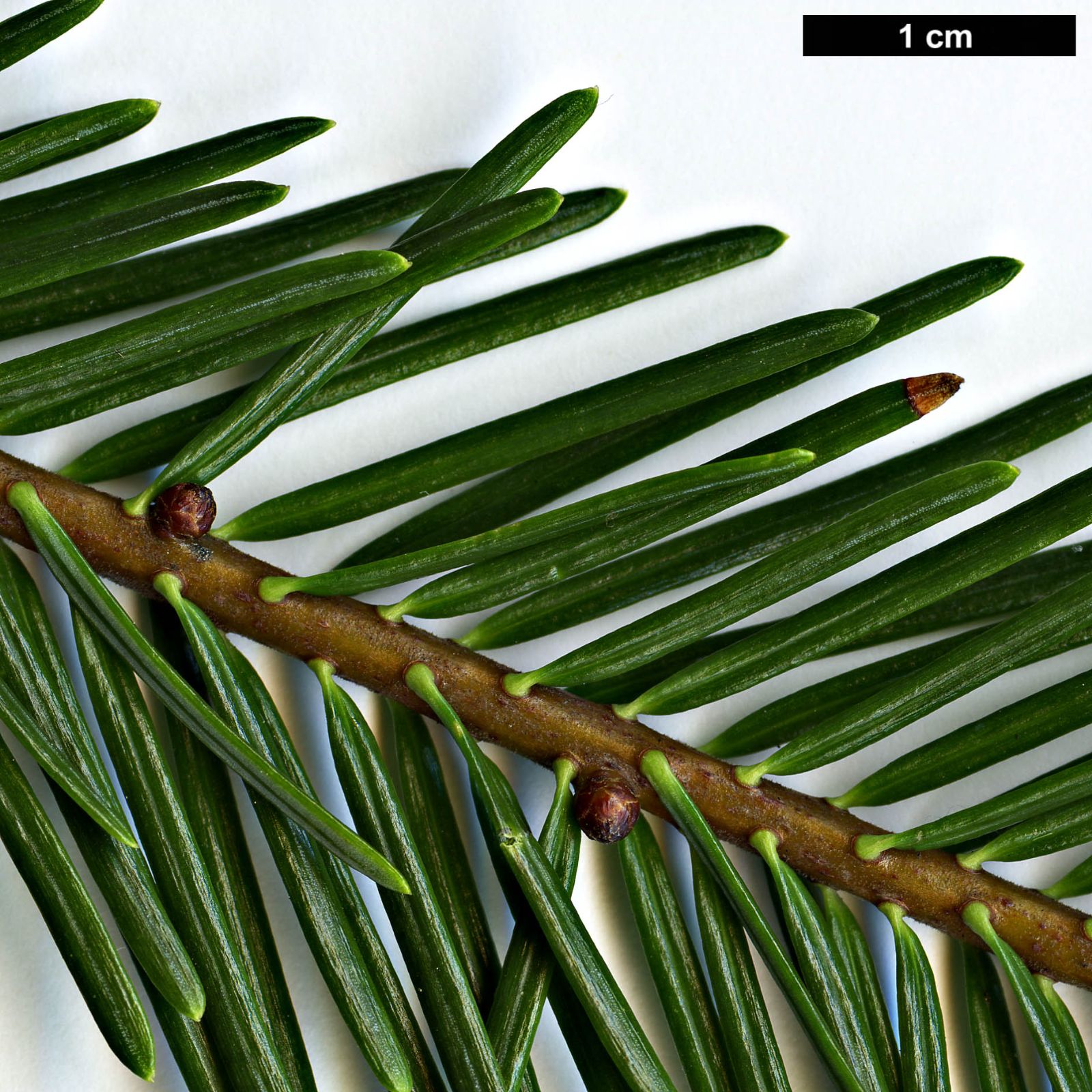Abies guatemalensis
Sponsor
Kindly sponsored by
Sir Henry Angest
Credits
Tom Christian (2021)
Recommended citation
Christian, T. (2021), 'Abies guatemalensis' from the website Trees and Shrubs Online (treesandshrubsonline.
Genus
Common Names
- Guatemala Fir
- Guatemalan Fir
- Sapin du Guatemala
Other taxa in genus
- Abies alba
- Abies amabilis
- Abies × arnoldiana
- Abies balsamea
- Abies beshanzuensis
- Abies borisii-regis
- Abies bracteata
- Abies cephalonica
- Abies × chengii
- Abies chensiensis
- Abies cilicica
- Abies colimensis
- Abies concolor
- Abies delavayi
- Abies densa
- Abies durangensis
- Abies ernestii
- Abies fabri
- Abies fanjingshanensis
- Abies fansipanensis
- Abies fargesii
- Abies ferreana
- Abies firma
- Abies flinckii
- Abies fordei
- Abies forrestii
- Abies forrestii agg. × homolepis
- Abies fraseri
- Abies gamblei
- Abies georgei
- Abies gracilis
- Abies grandis
- Abies hickelii
- Abies holophylla
- Abies homolepis
- Abies in Mexico and Mesoamerica
- Abies in the Sino-Himalaya
- Abies × insignis
- Abies kawakamii
- Abies koreana
- Abies koreana Hybrids
- Abies lasiocarpa
- Abies magnifica
- Abies mariesii
- Abies nebrodensis
- Abies nephrolepis
- Abies nordmanniana
- Abies nukiangensis
- Abies numidica
- Abies pindrow
- Abies pinsapo
- Abies procera
- Abies recurvata
- Abies religiosa
- Abies sachalinensis
- Abies salouenensis
- Abies sibirica
- Abies spectabilis
- Abies squamata
- Abies × umbellata
- Abies veitchii
- Abies vejarii
- Abies × vilmorinii
- Abies yuanbaoshanensis
- Abies ziyuanensis
Tree to 35–40 m, to 1–1.5 m dbh. Crown broad conical, conical-columnar and domed in older trees, often irregular with multiple upswept branches and co-dominant leaders in the upper crown. Bark of young trees smooth, grey at first, later grey-brown, decoming scaly in old trees. First order branches spreading horizontally or strgonly upswept in the upper crown. Branchlets slender, greenish- or reddish-brown in their first year, later maturing grey, prominently ridged and grooved, glabrous, or initially pubescent. Vegetative buds ovoid-globose, 4–5 × 3–3.5 mm, resinous. Leaves in two ranks either side of shoot, those of the lower rank spreading at right angles to the shoot or slightly forwards, those above more foreward, strongly pectinate on vegetative shoots, (1.2–)1.5–5(–8) cm × 1.2–2 mm, twisted at base, apex emarginate or occasionally obtuse, glossy green, with with two stomatal bands below, a few flecks of stomata occasionally near the apex above. Pollen cones lateral, 2–2.5(–3.5?) cm long, yellowish. Seed cones erect, subsessile, oblong-cylindrical with an obtuse or truncate apex, 8–12(–16) × 4–5.5 cm, blue-purple when immature, dark purplish-brown when mature; seed scales transversely oblong to reniform, 2–2.5 × 3 cm at midcone; bracts 1.2–1.7 cm long with short triangular cusps, included or slightly exserted. (Farjon 2017; Vázquez-García et al. 2014; Debreczy & Rácz 2011).
Abies guatemalensis (sensu lato) has one of the largest ranges of any of the Mexican-Mesoamerican firs. It is distributed along the Pacific side of the subcontinent, through the Sierra Madre del Sur in southern Mexico, into the high mountains of southern Guatemala, Honduras, and El Salvador, mostly in very localised, isolated stands, which themselves occur over a considerable altitudinal range of 1200–4100 m asl, though usually not below c. 3000 m asl in the far south (Debreczy & Rácz 2011). Some authorities also consider it indigenous further north and east, as far north as Mexico’s Tamaulipas state, but opinion is split on how to treat material from that area. This has implications for trees in collections, for much cultivated material, including nearly all extant trees in the UK, is traceable to Tamaulipas.
As is to be expected, A. guatemalensis exhibits considerable variation across its diverse and extensive range, and multiple taxa have been described in attempts to circumscribe this diversity. The species Abies tacanensis and A. zapotekensis were described in 1940 and 1995 respectively; both have since been relegated to infraspecific rank below A. guatemalensis, or else consigned to synonymy entirely, following the attentions of subsequent botanists. Several infraspecific taxa have been described, including: var. jaliscana Martínez (1948); var. longibracteata Debreczy & Rácz (1995); var. tamaulipasensis Silba (1997); var. ixtepejiensis Silba (2000); and var. rushforthii Silba (2000) (ipni.org). The variation implied by each of these names also corresponds, more or less, to a discrete geography, hence Silba later amended all these varieties, and A. zapotekensis, to subspecies rank (ipni.org). Farjon (2001; 2017) consigns all these names to synonymy, with the sole exception of var. jaliscana which he accepts, as do Debreczy & Rácz (who also accept var. longibracteata, var. tacanensis, and A. zapotekensis) (Debreczy & Rácz 2011).
Studies have found evidence for high levels of genetic differentiation between A. guatemalensis populations, but low levels of diversity within them (Aguirre-Planter, Furnier & Eguiarte 2000); this is partly due to rapid fragmentation driven by human activity (Strandby et al. 2006). It could be argued, in strictly taxonomic terms, that this undermines any perceived value in attempts to classify this diversity too finely. Untangling the full extent of diversity within A. guatemalensis is fraught with difficulty, not least because of far more significant uncertainties concerning species delimitation in the region. Strandby, Christensen & Sørensen (2009) examine the ‘Abies religiosa-hickelii-guatemalensis complex’ and conclude no more than one entity at species rank is justified, however, their taxonomic reorganisation has not been widely adopted thus far, and further investigations seem necessary to convince critical audiences. Even if their broad conclusions gain more widespread support, modifications to their proposed nomenclature may still be necessary to render it workable (see further discussion under ‘Abies in Mexico and Mesoamerica’).
For the purposes of Trees and Shrubs Online three entites will be considered within A. guatemalensis, each of which is in cultivation in our area, and each of which has a distinct distribution, hence Silba’s use of subspecies seems the most appropriate approach to adopt. The true identity/affinity of introductions from Tamaulipas will likely be subject to ongoing debate for some time; for ease of reference these are discussed under subsp. tamaulipasensis. There seems to be broad agreement that material from Jalisco, circumscribed under some permutation of the name jaliscana, is distinct; it is discussed here as subsp. jaliscana. Everything else, distributed in the mountains facing the Pacific from southern Mexico south to El Salvador, is here considered under subsp. guatemalensis.
subsp. guatemalensis
Common Names
Guatemalan Fir
Guatemala Fir
Synonyms
Abies guatemalensis var. ixtepejiensis Silba
Abies guatemalensis var. longibracteata Debreczy & Rácz
Abies guatemalensis var. rushforthii Silba
Abies tacanensis Lundell
Abies zapotekensis Debreczy, Racz & Ramírez
Leaves 1.5–3 cm long with emarginate (rarely obtuse) apex. Seed cones sessile, 8–12 cm long, apex truncate, bracts included. (Farjon 2017; Debreczy & Rácz 2011).
Distribution
- El Salvador
- Guatemala
- Honduras
- Mexico
RHS Hardiness Rating: H5
USDA Hardiness Zone: 8-9
Abies guatemalensis subsp. guatemalensis is comfortably the most southerly occurring fir in the world, reaching 14°3’N in the mountains of El Salvador (Debreczy & Rácz 2011). It is highly threatened and the only member of the genus included on CITES Appendix 1. Significant felling and deforestation occurred through the 20th century, and in recent years illegal logging and harvesting for Christmas trees and other festive decorations has continued to hamper regeneration (Strandby et al. 2006). The establishment of dedicated Christmas tree plantations is helping to address this (Córdova 2007) but illegal exploitation remains a significant problem.
It may be that few cultivated trees belong to this, the nominate subspecies: all trees known in the UK are traceable to Mexico’s Tamaulipas state, treated here as subsp. tamaulipasensis, except for a single specimen growing at Tregrehan, Cornwall. The Tregrehan tree is ultimately traceable to Guatemala, from where an American seed merchant obtained seed in the 1980s. Some of this seed was sent to Arboretum Waasland in Belgium, where a single tree grew, and from which a scion was sent to Tregrehan, where it was finally planted in 1996 and had made a tree of 12 m by 2014 (K. Rushforth pers. comm.; Tree Register 2021). Material of Guatemalan origin is cultivated in California, at the UBC Botanical Garden (accession 2009.0329) (University of British Columbia 2021) and at the San Francisco Botanical Garden (accession 1993.0882) (sfbg.org). George Urr Skinner (1804–1867) collected Guatemalan seed in the late 19th century and introduced this to England, but although some plants were raised none persisted very long in collections (Elwes & Henry 1906–1913).
subsp. jaliscana (Martínez) Silba
Common Names
Jalisco Fir
Synonyms
Abies jaliscana (Martínez) Mantilla, Shalisko & A. Vázquez
Abies guatemalensis var. jaliscana Martínez
Abies flinckii Rushforth (pro parte, excl. type)
Tree 20–30 m tall, to 1 m dbh. Branchlets maturing dark reddish-brown with a dense covering of short pubescence in their first year, later grey and glabrous. Leaves (2–)3.5–6.5(–8?) cm, apex obtuse or emarginate, glossy green above, glaucous green below, with a few broken lines of stomata near the apex above. Pollen cones long, 4–6 × 0.9–1.7 cm. Seed cones 6–10 × 2.5–4 cm, short-pedunculate, peduncle to 1 cm, apex rounded, bracts included or the cusp just exserted, ripening April-May. (Farjon 2017; Vázquez-García et al. 2014; Debreczy & Rácz 2011).
Distribution
- Mexico – Jalisco (Talpa de Allende), Michoacán
When he described Abies flinckii in 1989, Rushforth included material then circumscribed under the name A. guatemalensis var. jaliscana (Rushforth 1989). More recent research (Vázquez-García et al. 2014) has confirmed the distinctiveness of both taxa: many of the collections cited in the protologue of A. flinkii (but not the type) are assigned by the latter authors to this taxon, which they elevate to species rank as A. jaliscana. Material bearing the name Abies guatemalensis var. jaliscana is cultivated at the San Francisco Botanical Garden (accession 1966–0303*A) (sfbg.org); whether this material represents Jalisco Fir or Flinck Fir is uncertain. Similarly, material grown as A. flinckii (but not the type, KR 621) may represent either taxon. The key differences concern phenology and seed cone morphology: flinckii seed cones are 12–16 cm long at maturity, ripening in November in-situ; jaliscana seed cones are 5–12 cm long at maturity, ripening in April-May in situ (Vázquez-García et al. 2014).
subsp. tamaulipasensis Silba (Silba)
Synonyms
Abies guatemalensis var. tamaulipasensis Silba
Branchlets smooth (not obviously ridged/grooved), maturing olive-brown to reddish-brown; leaf apex obtuse or (very) weakly emarginate; seed cones small, < 6 × 3 cm. (pers. obs.).
Distribution
- Mexico – Tamaulipas (and adjacent states?)
RHS Hardiness Rating: H5
Tamaulipas, the state for which this taxon was named in 1997, lies on Mexico’s east coast adjacent to the Gulf of Mexico. This is at odds with what is known and generally accepted about A. guatemalensis; that it mainly occurs in mountains facing the Pacific on the subcontinent’s western side (Farjon 2017; Debreczy & Rácz 2011). It isn’t clear why this taxon is so seldom accepted – Silba’s splitting of Guatemalan Fir into quite so many infraspecifics is no doubt a factor, perhaps evoking ‘the boy who cried wolf’ sentiments – but in this case the geographic aberrance justifies reappraisal. Debreczy & Rácz (2011) do not discuss Silba’s Tamaulipas taxon at all, but in 1995 they described A. hidalgensis from neighbouring Hidalgo. If the true affinity of subsp. tamaulipasensis is to be scrutinised – and logic demands that it should be – then A. hidalgensis becomes intriguing, for besides its proximity to Tamaulipas this too shows some affinity with A. guatemalensis. Strandby, Christensen & Sørensen (2009) refer Tamaulipas populations to their concept of guatemalensis (as does Farjon (2017)) but they make no mention of A. hidalgensis, which surely needs to be taken into consideration before any firm conclusions can be drawn regarding species delimitation.
Material from Tamaulipas is in cultivation under Silba M-00357 and 93–011, both originally collected as ‘A. tamaulipasensis’, but it isn’t clear whether these two numbers represent a single collection event or two. Silba sent seed to various institutions on both sides of the Atlantic, ensuring a broad distribution. Extant trees from Silba M-00357 grow, for example, at Bedgebury National Pinetum, Sir Harold Hillier Gardens, Tregrehan, and Picton Castle in Wales; the Picton tree was 14 m × 30 cm dbh in early 2018 (pers. obs.). Silba 93–011 is represented by two trees at the Quinta Arboretum in Cheshire, 10 m × 33 cm and 12 m × 35 cm in early 2019 (pers. obs.); it is also the source of the tree at Wakehurst mentioned in New Trees, 8 m in 2005 (Grimshaw & Bayton 2009, p. 53) and 14 m × 32 cm dbh in 2015 (Tree Register 2021). The Bedgebury tree was studied closely in 2020 and found to be ‘disconcordant in terms of cone morphology’ with the description [of A. guatemalensis var. guatemalensis sic.] given by Farjon (1990) (B. Robertshaw pers. comm. 2020), which perhaps further supports the case for some kind of taxonomic distinction. Other material from Tamaulipas is cultivated in the USA at the University of California Botanic Garden (simply as A. guatemalensis: accession 97.0515, Schoenfeld & Fairey T72M101; and 98.0066, Fairey T45M20.5S) (University of California Botanical Garden 2021). The latter is also grown in the UK, including in Maurice Foster’s collection at White House Farm in Kent. This was 14.5 m × 35 cm dbh in 2019 (Tree Register 2021).

